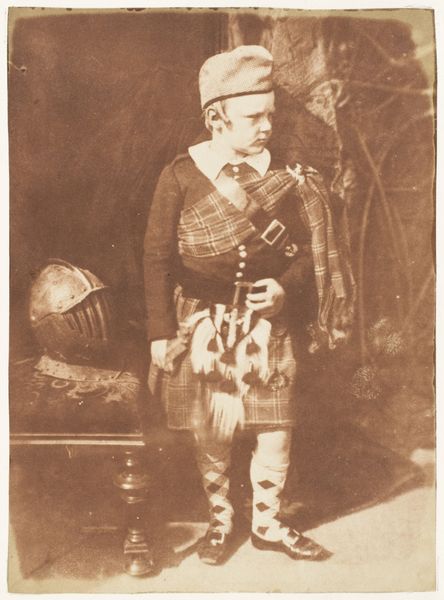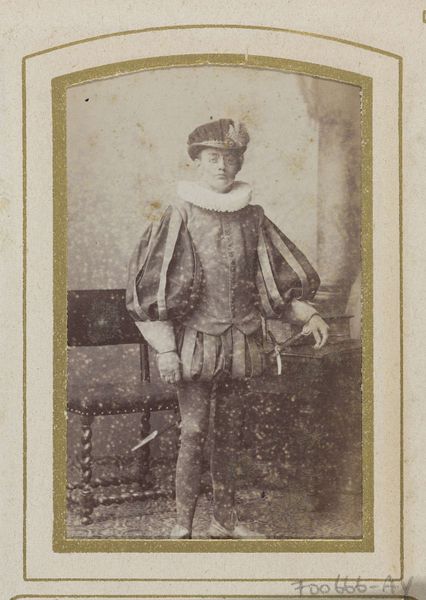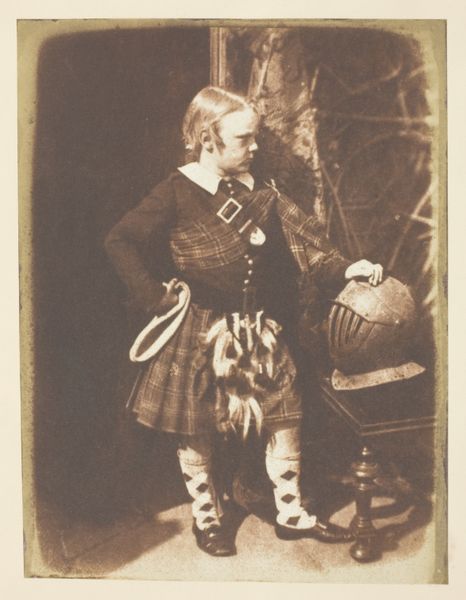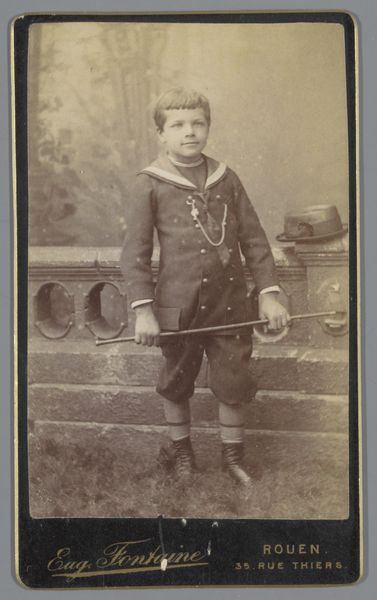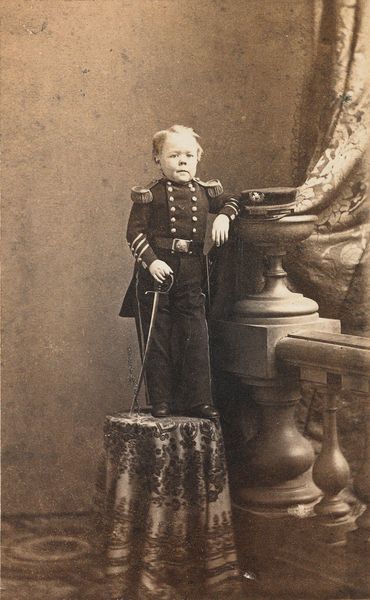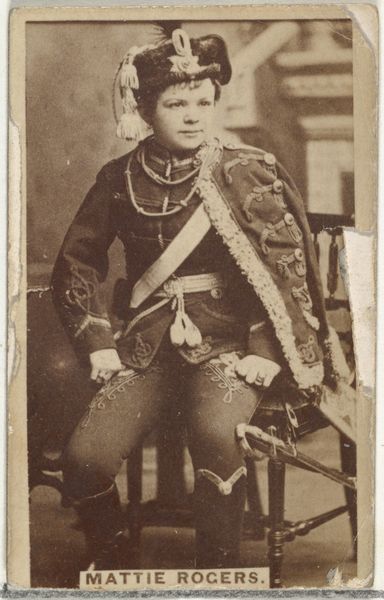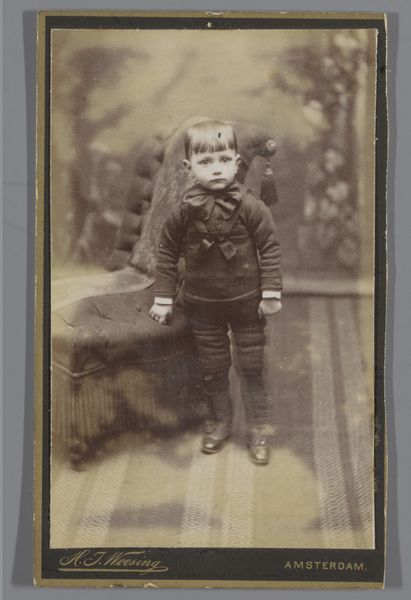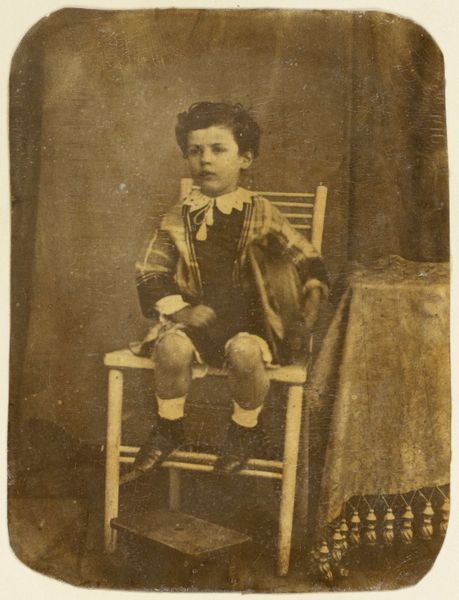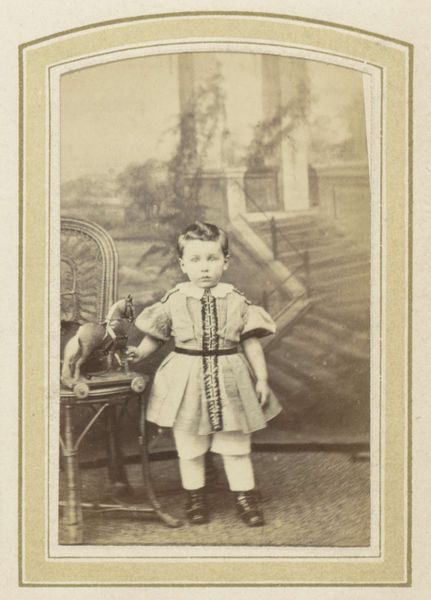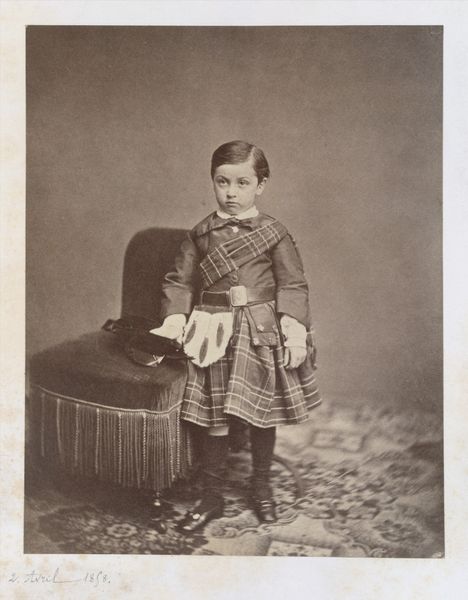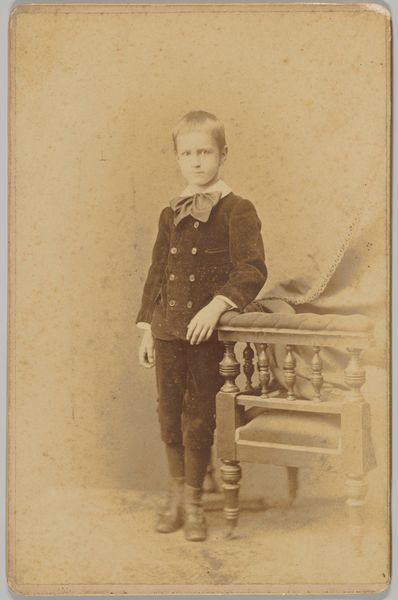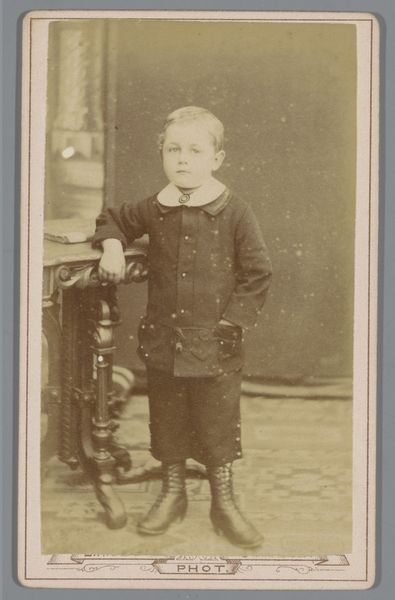
daguerreotype, photography
#
portrait
#
daguerreotype
#
photography
#
romanticism
#
realism
Copyright: Public Domain
Curator: This is "Jimmy Miller," a daguerreotype created between 1843 and 1847 by Hill and Adamson. It's currently held at the Metropolitan Museum of Art. My first impression? The texture—a ghostly, dreamlike quality hangs over the entire scene, and I keep being drawn back to this ornately carved chair sitting behind Jimmy. Editor: He seems terribly unimpressed! Perhaps it’s a child’s reluctance to pose. However, consider what the attire signifies: a meticulously crafted Scottish kilt, symbolic of lineage and belonging. This visual language underscores the societal emphasis on identity, a curated performance, even for a child. How does it impact the viewer's interpretation, knowing it’s not just a simple portrait? Curator: I see it, a kid playing dress-up, sure. I guess I never stopped to think who decided he would wear it—and maybe if he had any say at all. The plaid looks rather severe for a little one like that. Do you get the feeling that the helmet and the chair might almost upstage young Jimmy here? He feels less like a little man and more like a small actor on a set. Editor: Precisely. Think about the socio-political backdrop, those post-Enlightenment discourses and Victorian ideals about childhood innocence that nonetheless become tied to displays of wealth. Notice how the image utilizes the trappings of aristocratic grandeur. We see a collision: childhood innocence colliding with the demands of historical representation and status projection. Curator: This kind of reminds me of an old photo booth at a country fair... that odd tension when realism tries to capture a touch of romantic idealism. As for the process here, using daguerreotype… there must have been such limited opportunity for natural movement and expression at the time. This could be a part of what feels unsettling in this scene. Editor: It really underscores the artifice, doesn't it? I look at it and wonder about what these early forms of photography were being used for. As daguerreotypes gained popularity and offered new means to preserve an image, it is inevitable to reflect upon who was most represented, who had access, and what social constructs are being advanced here. Curator: Definitely, what lingers is not just the image itself, but a haunting sense of what was deemed worthy of preserving—or performing. Editor: Yes, leaving us to ponder the complex dance between identity, history, and representation within these early photographic frames.
Comments
No comments
Be the first to comment and join the conversation on the ultimate creative platform.
